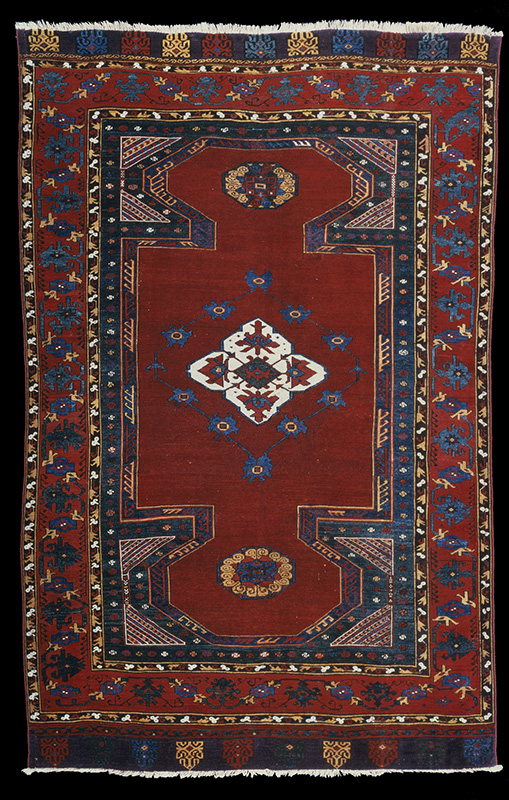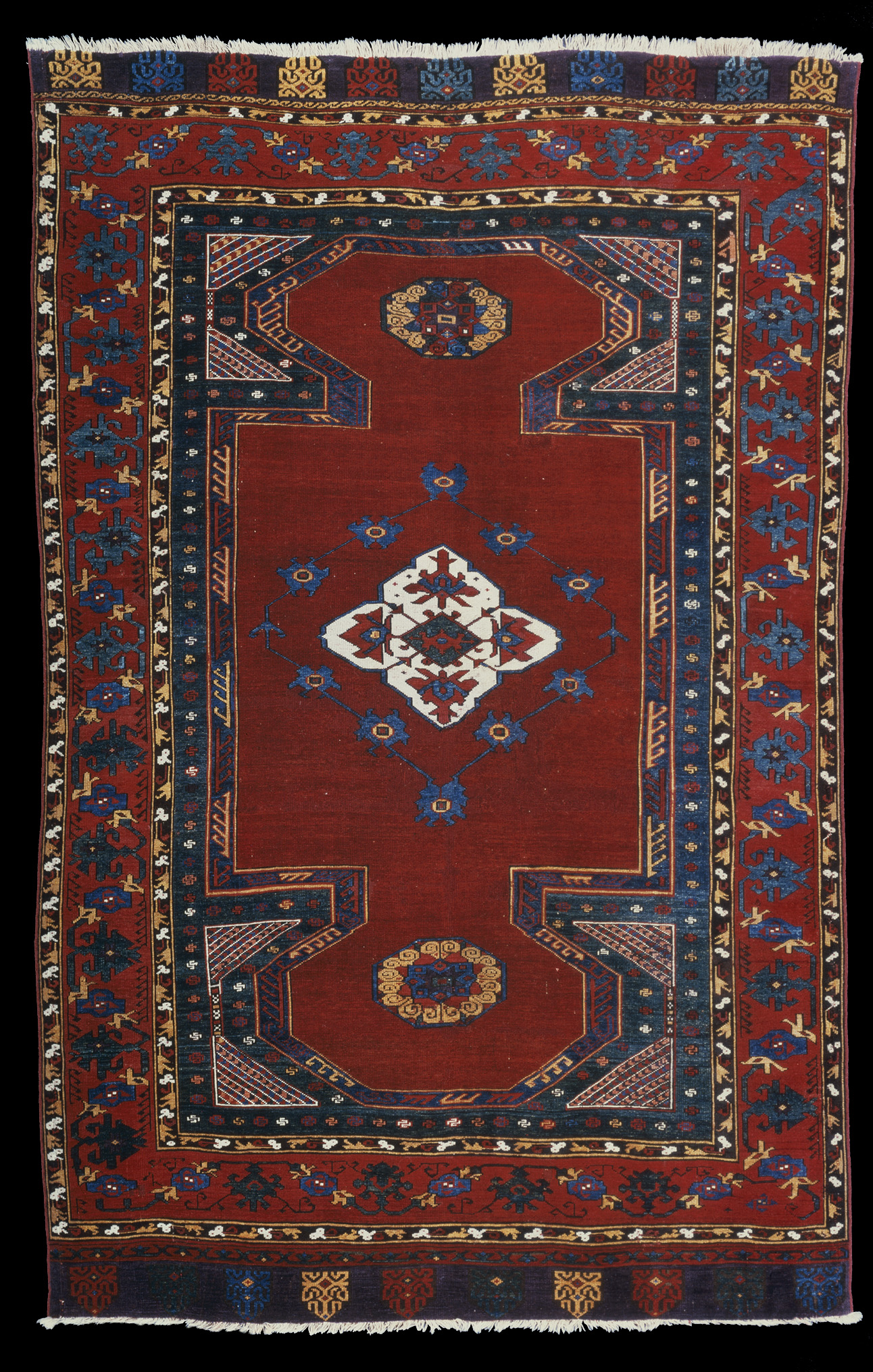|
Bausback
Double-Niche Carpet
Turkey, Western Anatolia, Ushak region, 1650-1750
Knotted
wool pile on wool foundation
98 1/2 x 64 1/2 in. (250.19 x 163.83 cm)
Gift of the 2004 Collectors Committee (M.2004.32)
Los Angeles County Museum of Art
Provenance: Bausback, Mannheim a
private Austrian collection; and Michael Franses, London; Dennis Dodds
Two other rugs, dated to the 16th-17th century and showing a
comparable drawing style and nearly identical composition of the central
medallion as well as the same wide range of saturated dyes, are in
European collections. All three exhibit particularly colorful and
elaborately rendered 'lappets' in the end panels. These three carpets may
be from the same villade or atelier, each rendered with a different design
variation with this medallion as a central feature. Connected blossoms
that surround the central medallion are consistent with a particular
Transylvanian carpet style, including 17th century Turkish rugs in Saxon
churches. Other elements, including identical narrow guard stripes that
flank the main palmette border, are found in examples of 16th-17th century
carpets in the Vakiflar and Turkish and Islamic Art Museums. The evidence
is clear that identical secondary borders, such as these, are a common
feature in early Turkish carpets. This palmette border is found in a rare
Ushak "Lotto" carpet dated to the second half of the 16th century; see
Antique Ottoman Rugs in Transylvania; ed. by Stefano Ionescu; cat. 16, p.
90, 2004.
|


